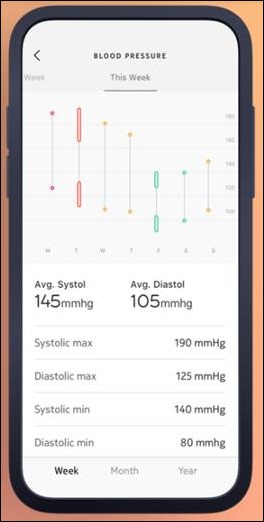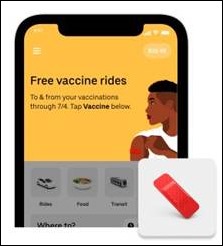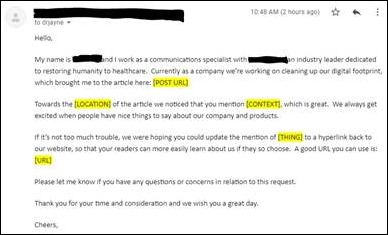Curbside Consult with Dr. Jayne 7/12/21
Sometimes a headline catches my eye, as did the one for this article about workers “epiphany-quitting” their jobs. For many, the COVID-19 pandemic has brought life into sharp focus and has accelerated decisions around what families find valuable and what can be done without. It’s been interesting to watch the flow of people both into and out of healthcare as people search for different work-related attributes: more meaning, better compensation, increased security.
One of my favorite co-workers at my former clinical employer was a seasoned professional sports mascot. He had worked for an NFL franchise before relocating and then hired on with the local baseball team. During the changes of the pandemic season, he saw the mascot workforce reduced from four to two, and despite being a pro at the signature strut and being able to do a backflip in a full-head costume, he decided he needed a change. He signed up for an emergency medical technician course and the rest is history. One of his favorite parts of being an EMT was being able to interact with people directly rather than through pantomime and oversized gestures. It was easy to see he enjoyed being around people and making them feel comfortable, even in stressful situations.
For him, moving into healthcare was about predictability and steady employment after having things pulled out from under him. It was a way to feel like he was controlling his own future, and especially with forecast shortages of healthcare workers, it’s probably a pretty solid bet. He was relatively lucky due to his age (mid 20s) and lack of family responsibilities. Not all workers are in that same situation, and I saw plenty of other co-workers leave healthcare because they couldn’t meet family responsibilities. One of my favorite medical receptionists quit because she couldn’t find reliable childcare to cover the 12-hour shifts that often stretched to 13 or 14 hours. Instead, she started providing in-home childcare, which allowed her to spend more time with her daughter as well as to help out young families in similar situations.
One of my favorite scribes was in the process of applying to physician assistant school when not only the pandemic hit, but one of her parents was diagnosed with a terminal illness. She decided to defer the application process to allow for more time with her family and also requested to go part-time at work. Although the company had a track record of refusing to allow people to go part-time unless they were enrolled in school, the pandemic forced them to adapt. Given the time needed to train a scribe and having someone willing to work in the uncertainty of a pandemic, it was a good solution for everyone.
Not everyone’s employers were that flexible, however. I watched a couple of nurses leave the workforce because part-time employment wasn’t an option and working 12-hour overnights on the COVID wards had simply worn them out. It was gut-wrenching to see these women quit jobs that they liked and would likely have stayed with had they been able to achieve flexibility, while the hospitals paid double or triple their salaries to travel nurses to cover the responsibilities.
Another friend who stayed in her ICU role out of a sense of duty and calling is still bitter about the bonuses paid to travel nurses who actually did less work than the employed nurses since they weren’t approved to use certain kinds of devices or equipment in patient care. She recently took a six-week “job swap” sabbatical where she moved to another part of the hospital and out of the ICU, which has allowed her to recharge to some degree. Still, she’ll be an empty nester in a couple of months, and I wonder if that sense of calling will still be there or if she will put the ICU behind her once and for all.
Even in healthcare technology roles, I’ve seen a change in some of the language used in promoting positions and during the interview process. Companies are more likely to advertise their flexibility and options to help workers achieve work-life balance. I see more mention of programs to allow employees to interact on non-work topics. such as support groups for employees caring for aging parents or small children, or as part of diversity efforts.
However, for every bit of flexibility, it seems another company is swinging the pendulum the wrong way. My local health system is hiring IT workers, but even though the positions are officially tagged as remote, they require relocation to the company’s headquarters state “for tax purposes.” Maybe the hospital just doesn’t want to deal with the paperwork, but they’re losing quality candidates and hiring manager friends are disgusted by the situation.
The sense that workers are evaluating their situations and deciding whether various aspects of their jobs are worth it or not is playing out across a number of industries. Due to the stressors that the pandemic has placed on healthcare organizations, however, it feels like we are experiencing it more acutely. I was having a discussion with one of my favorite revenue cycle folks recently, and in follow up she sent me an op-ed piece that I missed back in December when I was so busy trying to keep my head above water at the urgent care. It’s by Claudia Williams, former White House senior advisor and former director of health information exchange at the US Department of Health and Human Services. Although the question it asks is “Do hospitals need a chief burden reduction officer?” I would argue that the concept reaches beyond the hospital walls. Instead, we should be asking whether any organization would benefit from someone whose main role is to reduce burdens and look for ways to streamline work.
Williams cites the “must-do list of priorities for health systems in 2021” as including the following: recover the bottom line, provide frontline care for the pandemic, address health inequities, reduce provider burnout, and prepare for value-based care. Nearly all of these goals are impacted by frustrating (and often outdated) processes, multiple sets of reporting requirements that might be at odds with each other, rising costs, and the somewhat unpredictable factors of dealing with an ongoing pandemic for the foreseeable future (and perhaps indefinitely). Williams proposes a new title to join the chief experience officers, chief growth officers, and other recently created roles: that of chief burden reduction officer.
I think it’s a fantastic idea having someone who could work across multiple disciplines and service lines to identify solutions that could benefit everyone. They could unlock the potential of all the technology solutions that have been purchased over the last decade and help get rid of paper workflows once and for all. They could help streamline the patient experience as well as the clinician experience so that the two elements work together rather than at cross purposes. A chief burden reduction officer could also work with governmental agencies to help develop policies that make sense not only philosophically, but in their actual execution. No more of the “great ideas, poorly executed” that we’ve all experienced.
One of my favorite lines in the piece is this: “Health systems deeply disrespect patients when they waste their time.” The same goes with their treatment of employees (whether they call them as such or try to use cutesy titles such as associate or co-worker). An employee whose time is wasted is one who could be using that time for patient care, professional development, stress reduction, or a number of other worthwhile pursuits. Williams sums this up beautifully in the closing sentences of the piece: “All of these processes – the email, the paper, the intake form, the chart download, the fax – they are fundamentally wasteful of this beautiful human energy that we desperately need to transform healthcare. We are a nation facing multiple health crises. We need to free precious human time to address them.”
It’s a great way to think about the challenges in front of us. Who’s ready to take the leap and employ their first chief burden reduction officer? Leave a comment or email me.

Email Dr. Jayne.


























The sentence was "most people just go to Epic UGM" - that's people going to Epic's annual user conference and…